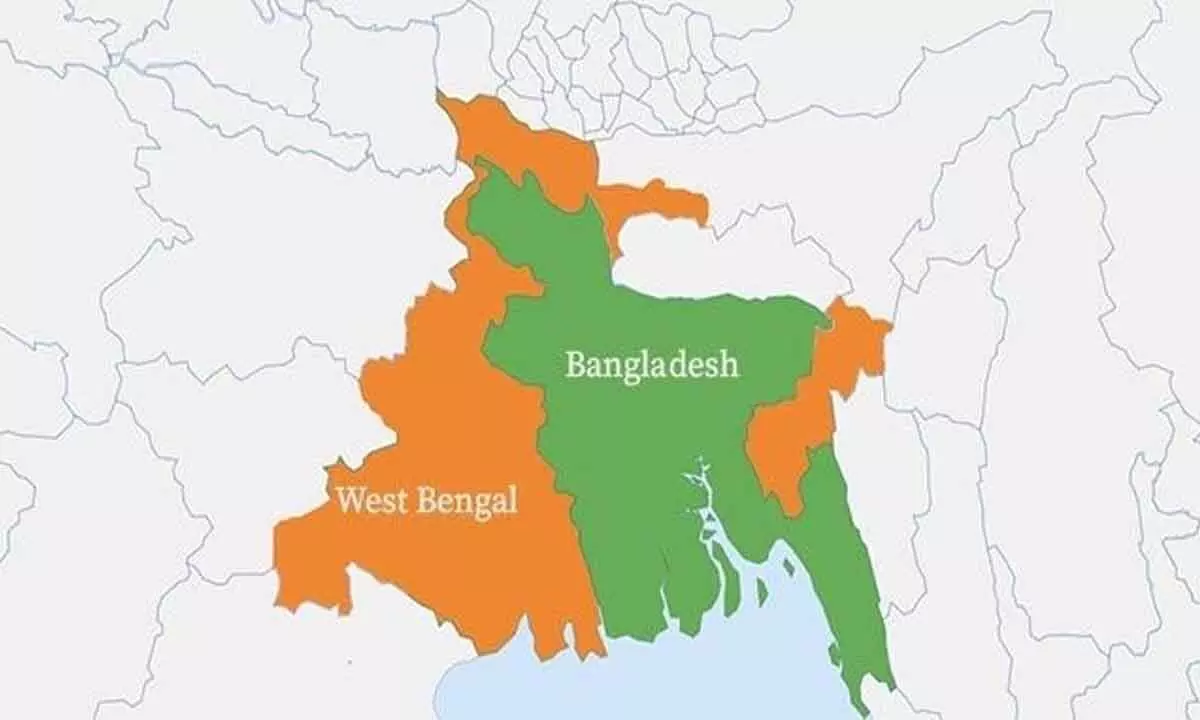Hindutva in Bengal, India’s freedom struggle and partition
Bengal boasts a rich historical tapestry, tracing back to ancient kingdoms like Pundra, Suhma, Vanga, Samatata, and Harikela. In the 4th century BCE, during the reign of the Nanda Empire, the formidable rulers of Gangaridai thwarted Alexander the Great’s advance with their war elephants
image for illustrative purpose

Bengal boasts a rich historical tapestry, tracing back to ancient kingdoms like Pundra, Suhma, Vanga, Samatata, and Harikela. In the 4th century BCE, during the reign of the Nanda Empire, the formidable rulers of Gangaridai thwarted Alexander the Great’s advance with their war elephants
The essence of Hindutva lies in the principle of liberty, advocating for the freedom to worship the divine in any form, at any time, and in any circumstance. This freedom extends beyond the boundaries of temples and rituals, permeating into the fabric of daily life, encouraging individuals to seek and connect with the divine in their own unique way. In a world often besieged by religious intolerance and strife, Hindutva stands as a beacon of hope, championing acceptance, love, and peace, and reminding us of our shared humanity and the intrinsic unity binding us together. Moreover, Hindutva isn’t merely a spiritual philosophy; it’s a pragmatic way of life deeply rooted in scientific principles. Contrary to the inequalities perpetuated by colonial powers, Hindutva upholds the inherent dignity and value of every individual, irrespective of caste, creed, or gender. It rejects the notion of superiority based on birthright and advocates for social justice and equality for all.
Bengal boasts a rich historical tapestry, tracing back to ancient kingdoms like Pundra, Suhma, Vanga, Samatata, and Harikela. In the 4th century BCE, during the reign of the Nanda Empire, the formidable rulers of Gangaridai thwarted Alexander the Great’s advance with their war elephants. The region’s history is adorned with illustrious Hindu monarchs such as Raja Ganesha, King Pratapaditya, Maharaja Rudranarayan, Rani Bhavashankari, and Raja Sitaram Ray. Despite facing challenges during the Mughal and British periods, the Hindu community in Bengal demonstrated remarkable resilience, exemplified by movements like the Anushilan Samiti.
This organization underwent a significant evolution, starting as a fitness club and transforming into an underground society for anti-British revolutionaries in the early 20th century. Initially advocating revolutionary violence to dismantle British rule in India, it emerged in Bengal in 1902 through the fusion of local youth groups and gymnasiums (akhara). It comprised two prominent and somewhat independent branches: the Dhaka Anushilan Samiti, centered in Dhaka, and the Jugantar group, centered in Calcutta. Led by nationalist leaders such as Aurobindo Ghosh and his brother Barindra Ghosh, the organization drew inspiration from ideologies like Italian Nationalism and Kakuzo Okakura’s Pan-Asianism.
By the 1920s, influenced by the Indian National Congress and the Gandhian non-violent movement, Anushilan Samiti shifted away from its philosophy of violence. Meanwhile, the iconic depiction of Bharat Mata, clad in saffron attire and holding symbolic items like a book, sheaves of paddy, cloth, and a rosary, gained prominence. Originating from Bankim Chandra Chatterjee’s 1870s novel; Anandmath; and later immortalized by Abanindranath Tagore’s 1905 water painting, Bharat Mata symbolized the spirit of Mother India during the independence movement, often associated with Swadeshi ideals. Bengal, a cradle of freedom fighters, saw the sacrifice of individuals like the 18-year-old Kudiram Bose, along with prominent figures such as Bagha Jatin, Basanti Devi, Desh Bandhu Chittaranjan Das, Shri Ganesh Ghosh, Matangini Hazra, Master Surya Sen and many.
Notably, Netaji Subhas Chandra Bose formed the Indian National Army (INA) to oust the British from India. Among these heroes, Gopal Chandra Mukhopadhyay (Gopal Patha) stood tall, nephew of revolutionary Anukul Chandra Mukhopadhyaya, who valiantly protected Hindus from violence instigated by Muslim League volunteers. G G Ajmiri, leader of the Muslim League’s student wing, and Mujibur Rahman, a member of the Muslim National Guard, appealed to Gopal to cease the bloodshed, showcasing moments of unity amidst turmoil.
In the realm of intellectual discourse, Swami Vivekananda’s historic address at the World’s Parliament of Religions in Chicago in 1893 remains a cornerstone. His impassioned advocacy for tolerance and acceptance resonated deeply, emphasizing India’s role as a refuge for individuals of all faiths, encapsulating the essence of brotherhood and compassion inherent in Hindutva philosophy. Even today, in 2024, when we discuss exemplary youth leaders, Swami Vivekananda stands out prominently. His historic speech at the World’s Parliament of Religions in Chicago in 1893 remains unforgettable. Proudly advocating the universal principles of tolerance and acceptance inherent in Hindutva, Swami Vivekananda depicted India as a sanctuary for refugees from across the globe, irrespective of their beliefs or origins.
He epitomized the ethos of brotherhood and compassion, fundamental to Hindutva philosophy. According to reports, a staggering 68 per cent of the prisoners (398 Indian revolutionaries out of 585) incarcerated in the Andaman’s Cellular Jail by the British between 1909 and 1938 hailed from Bengal alone. However, it’s a matter of profound shame that due to political interests, Bengal was divided into East Pakistan (now Bangladesh) and West Bengal (India). This division disrupted the cultural and social fabric of the region, causing untold suffering and displacement for many Bengalis.
Adding to this indignity is the recent implementation of the Citizenship Amendment Bill (CAA), which requires Hindu Bengalis who migrated to India to prove their migration status or possess relevant certificate/documents. This requirement imposes an additional burden on a community that has already sacrificed immensely for India’s freedom struggle. These individuals, who have dedicated their lives to the ideals of independence and nation-building, now find themselves compelled to validate their identity to the very government they helped to establish. It’s a stark reminder of the complexities and injustices that persist in the aftermath of historical events and underscores the need for compassionate and equitable approaches to citizenship and identity in our society.
(The author is Scientist and General Secretary of Bongo Bhashi Mahasabha Foundation.)

